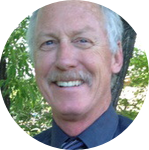About This Project
Drought threatens sustainability of agriculture throughout the world. A US native gypsum-endemic grass, Sporobolus nealleyi may harbor the ability to extract crystallized water during drought from gypsum rock. Though genetically similar to crops such as rice, wheat and corn, the mechanisms responsible for this behavior in gypsophiles is unknown. Our goal is to create a genome assembly to identify these mechanisms and use the mechanisms to develop crops with improved drought tolerance.
Ask the Scientists
Join The DiscussionWhat is the context of this research?
Drought severity and frequency are increasing throughout the world, threatening our food supply. Up to 99% of some US-consumed crops may be grown in 1 of 2 drought-stricken valleys in California. As drought has persisted, the priorities of crop improvement have evolved. New tools are needed to enable crops' long-term drought tolerance while preserving scarce water resources.
Fortunately, scientists can turn to nature for examples of the biology we seek to impart in crops. The US-native Sporobolus nealleyi is a unique grass endemic to gypsum-soils. Another gypsum-edemic plant was found to extract tightly bound water from gypsum rock in Spain. Could this grass share that ability? Can we utilize the genes that control this in cereal crops? These questions need to be answered.
What is the significance of this project?
Today's agricultural and horticultural practices are untenable. As part of a new Green Revolution, future crops must retain their yields using less water and fertilizer. Sporobolus study allow for new tools to be adopted in these crops. These grasses thrive in some of America's harshest habitats. They provide opportunity for improvement of the world's dominant grain crops not only in drought-stricken regions of production in America, but throughout the world. Current crops require farmers to utilize water resources that are no longer available during drought. We can utilize the genes from grasses that thrive in the dry habitats to improve today's crops to survive during periods of drought. Results of this work can be utilized by future researchers to enable this goal.
What are the goals of the project?
I will utilize the proposed funding to collect whole-plant and fresh tissue samples of at least 2 S. nealleyi accessions, extract high molecular weight genomic DNA and submit it for genome sequencing (Illumina HiSeq-X or Hi-Seq2500 platforms) to the GCATseek-quence program, from which a draft genome assembly will be constructed. This will provide a first look at the genetic underpinnings of gypsophily in plants. Once this is in place, I aim to identify genetic differences between S. nealleyi, and common Poaceae crops such as wheat and corn. I will host all generated data via the web for collaboration with other researchers and public in general. Finally, I aim to publish this data to establish this foundational knowledge for the scientific community.
Budget
The requested funding will supplement existing funding toward this effort. With existing collaboration from Dr. Vince Buonaccorsi (GCATseek-quence program) and Amit Dhingra (Washington State University), I can utilize the $2000 targeted for this project to acquire enough sequencing data for generation of an draft genome sequence. Comparative analysis of genes and gene families will be identified in this initial assembly against publicly available genomes in wheat, corn and other Poaceae genomes pursuant to drought tolerance, oxalate abundance, fungal endophytes and gypsum-endemism. From this, I will identify uniquely present or absent sequences in the S. nealleyi genome. These can serve as candidate genes or markers correlated to the unique behavior in S. nealleyi. I will shoulder other costs of this project through existing collaboration and funding commitments. This project will provide a basis for comprehensive reference genome sequencing in gypsophilic species.
Endorsed by
Meet the Team
Affiliates
Team Bio
My training in plant physiology and genomics prepare me to best utilize the data generated from this project toward understanding the biology seen in S. nealleyi and similar gypsophiles. I will rapidly advance this understanding through existing collaborations with colleague in functional genomics Amit Dhingra (Washington State University) to leverage and disseminate this data within the community as efficiently as possible.
Christopher Hendrickson
Take a moment to consider the remarkable diversity of habitats the Earth contains. Baking heat. Extreme cold. Swamps. Deserts. Places awash, and seemingly devoid of water. Places right next to geothermal vents, spewing noxious gases and superheated water. Places humanity has struggled to colonize. And yet, plants have evolved the mechanisms needed to colonize and thrive in each and every such habitat all around the globe.
My research aims to identify and leverage these mechanisms in plants adapted to these extreme environments toward improvement of crops. Instead of spending countless years developing crops capable of squeezing another 2% of yield under optimal soil fertility and irrigation, I advocate development of crops which can instead enable reclamation of 2% more arable land. Any yield from such plants could enable more production, with less consumption of valuable natural resources.
Long-term sustainability of global agriculture is threatened by climate change. Drought, heat and salt stresses will inevitably reduce yields. Fortunately, we need only look to species which have already evolved the tools to cope with the stresses of climate change. Such desert-dwelling species harbor powerful mechanisms which can provide the foundational knowledge needed for crop improvement, and enable long-term sustainability of global agriculture.
Lab Notes
Nothing posted yet.
Additional Information
As a Assistant Professor of Biology at a small private institution in Southern California, this project addresses concerns at local, state, regional and national levels. Recently, California has announced that "temporary" drought restrictions will likely become permanent fixtures upon the state. This will serve to drastically alter the landscape of agriculture and horticulture in the American west as access to water transforms the feasibility of once profitable planting decisions.
New tools are needed to ensure long-term sustainability of these industries, not only in Southern California but much of the American west, and world in general. Gypsophily is an emerging avenue to address these concerns. It has been reported in a wide variety of plants, but S. nealleyi may be one of very few members of Poaceae to exhibit it.
The small requested funding of this project represents a critical kickstart to my efforts to highlight the powerful biology found in gypsophilic species and possibly begin leveraging it in a greater ecological context. I will be utilizing funding (and data, if funded) from this project in concert with other grants such as the DOE-JGI Community Science Program (for FY2017) to build a robust foundation of genomics knowledge from which the agricultural, horticultural and varied communities of plant biology researchers can address questions pursuant to gypsophilic plants.
Project Backers
- 7Backers
- 100%Funded
- $2,005Total Donations
- $286.43Average Donation


